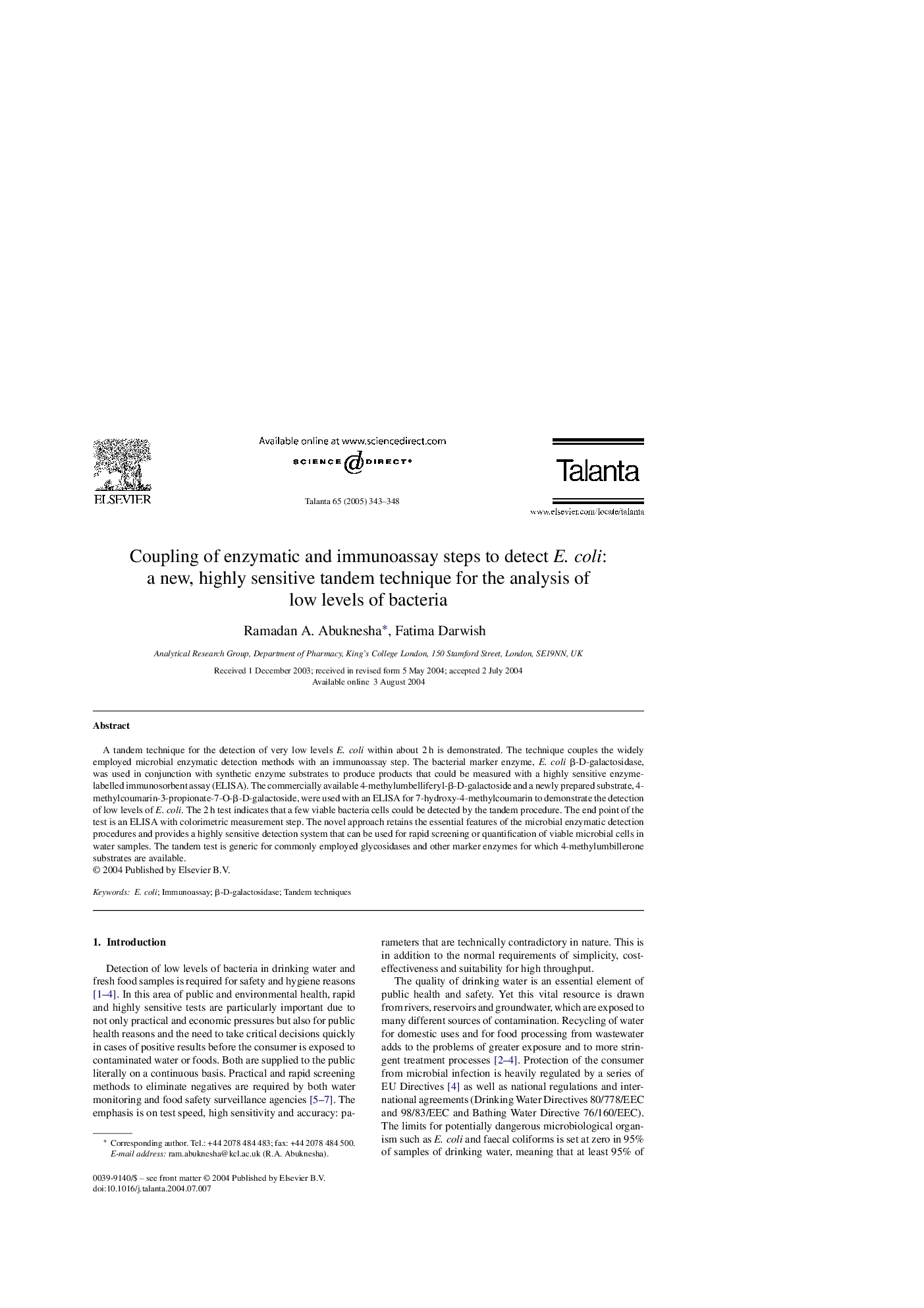| Article ID | Journal | Published Year | Pages | File Type |
|---|---|---|---|---|
| 10560053 | Talanta | 2005 | 6 Pages |
Abstract
A tandem technique for the detection of very low levels E. coli within about 2 h is demonstrated. The technique couples the widely employed microbial enzymatic detection methods with an immunoassay step. The bacterial marker enzyme, E. coli β-D-galactosidase, was used in conjunction with synthetic enzyme substrates to produce products that could be measured with a highly sensitive enzyme-labelled immunosorbent assay (ELISA). The commercially available 4-methylumbelliferyl-β-D-galactoside and a newly prepared substrate, 4-methylcoumarin-3-propionate-7-O-β-D-galactoside, were used with an ELISA for 7-hydroxy-4-methylcoumarin to demonstrate the detection of low levels of E. coli. The 2 h test indicates that a few viable bacteria cells could be detected by the tandem procedure. The end point of the test is an ELISA with colorimetric measurement step. The novel approach retains the essential features of the microbial enzymatic detection procedures and provides a highly sensitive detection system that can be used for rapid screening or quantification of viable microbial cells in water samples. The tandem test is generic for commonly employed glycosidases and other marker enzymes for which 4-methylumbillerone substrates are available.
Keywords
Related Topics
Physical Sciences and Engineering
Chemistry
Analytical Chemistry
Authors
Ramadan A. Abuknesha, Fatima Darwish,
